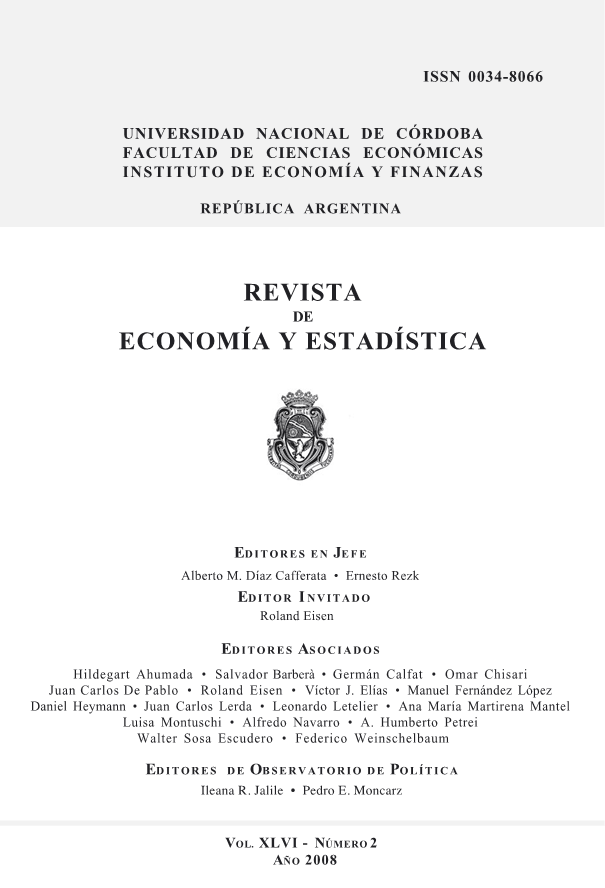Trade and Technology Progress: An Analysis for Uruguay
DOI:
https://doi.org/10.55444/2451.7321.2008.v46.n2.3854Keywords:
trade, technology spillovers, foreign direct investment, learning by exporting, technology transferAbstract
We examine technology spillovers to Uruguayan manufacturing firms through imports, foreign direct investment (FDI) and learning by exporting, for the period 1997-2001. This work provides evidence of the dynamic gains from trade openness for a small developing country, analysing simultaneously the various possible channels of international technology diffusion at the firm level. We find evidence of positive effects on production of imported intermediates and backward linkages with foreign firms. On the other hand there is evidence of negative effects of multinational presence at the industry level, while results for exporting are mixed. Finally, the results would indicate that absorptive capacity matters to take advantage of increased openness and FDI, so policies aimed to improve absorptive capacity such as investing in R&D and improving the skills of workers through training are likely to play a role in facilitating knowledge spillovers.
Downloads
Downloads
Published
Issue
Section
License
Copyright (c) 2008 Adriana Peluffo

This work is licensed under a Creative Commons Attribution-NonCommercial-NoDerivatives 4.0 International License.
Authors who have publications with this journal agree to the following terms:
Authors retain their copyright and grant the journal the right of first publication of their work, which is simultaneously subject to the Creative Commons Attribution-NonCommercial-NoDerivatives 4.0 International License that allows third parties to share the work provided that its author and first publication in this journal are indicated.
Authors may adopt other non-exclusive licensing arrangements for distribution of the published version of the work (e.g. depositing it in an institutional telematic archive or publishing it in a monographic volume) as long as the initial publication in this journal is indicated.
Authors are allowed and encouraged to disseminate their work via the Internet (e.g. in institutional telematic archives or on their website) before and during the submission process, which can lead to interesting exchanges and increase citations of the published work. (See The Open Access Effect)










